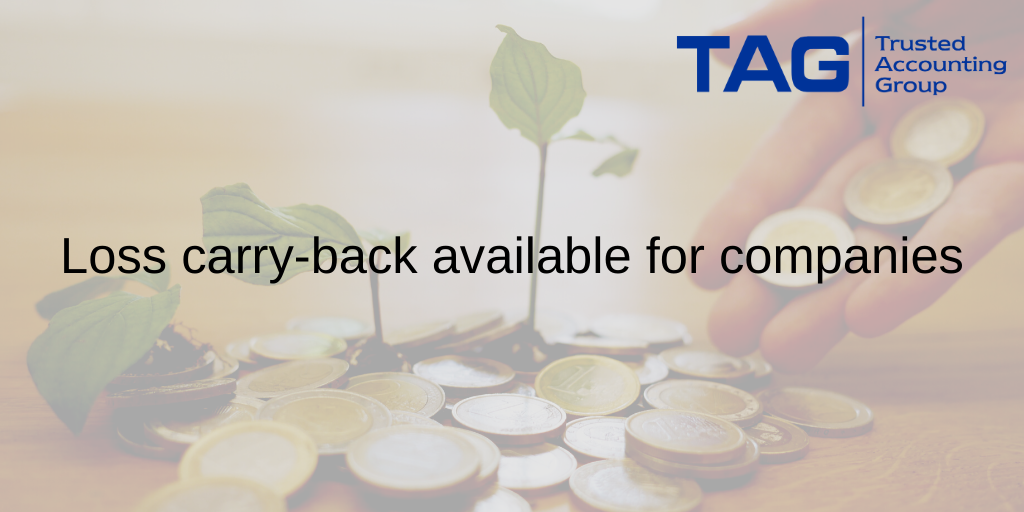19 March

Loss carry-back available for companies
One part of the federal Government’s JobMaker Plan, announced in the 2020 federal budget, will temporarily allow an eligible company to carry-back a tax loss.
Broadly, this measure will be in place for three income years, from 2019–20 to 2021–22.
A company will be entitled to a refund of income tax paid from the 2018–19 income year onwards.
A similar measure was previously in place for the 2012–13 income year, but later repealed. Details relating to the new rules may mirror the old ones in parts but are not identical.
The loss carry-back tax offset is optional. If an entity chooses not to apply for the refundable offset, the current rules relating to loss deferral apply.
Corporate tax entity
The new measure allows the loss carry-back tax offset to be claimed by a corporate tax entity. ITAA 1997 s 960-115 defines a corporate tax entity as a:
- company
- corporate limited partnership, or
- public trading trust.
General eligibility requirements
Apart from having tax losses in a relevant income year, a corporate tax entity is eligible for loss carry-back offset if turnover is under $5 billion.
In this instance, turnover refers to the definition used in the small business entity regime. Therefore, turnover refers to aggregated annual turnover, including all the corporate tax entity’s connections and associates.
A corporate tax entity must also be able to utilise the loss under loss integrity rules. These rules are commonly known as the Continuity of ownership test or the Similar business test.
The entity must have lodged an income tax return for the current year and each of the five years immediately preceding it to be entitled to the offset.
In some instances, a corporate tax entity may not have been required to lodge a return for a necessary income year. This does not preclude an entity’s eligibility for the offset.
For example, if a company only has returns lodged for the previous three years due to not being in existence prior to that, it will be allowed to claim an offset
Loss carry-back tax offset rules
A corporate tax entity is able to utilise the loss carry-back tax offset for the 2019–20, 2020–21, and/or 2021–22 income year.
However, an entity who incurred a tax loss in the 2019–20 income year is only eligible for the refundable offset on lodgment of the 2020–21 income tax return.
Any tax loss made in the above income years is only eligible for the carry-back offset if the entity had an eligible income tax liability.
An income tax liability consists of the entity’s gross tax payable on taxable income at the applicable rate less any tax offsets applied (ITAA 1997 s 13-1).
For an income tax liability to be eligible for the loss carry-back offset is must have accrued as a result of the 2018–19, 2019–20, or 2020–21 income years.
When claiming the loss carry-back offset, the corporate tax entity must use the corporate tax rate in the loss year. For example, a base rate entity has a corporate tax rate of 26% in the 2020–21 income year.
A corporate tax entity is not able to claim a refundable offset for a capital loss, as these are dealt with separately in the Tax Acts.
The loss carry-back tax offset also cannot exceed the:
- amount of the earlier tax paid by the entity (during the relevant years), and
- balance of the entity’s franking account at the end of the income year in whaich the offset is being claimed.
Early lodger ATO form and instructions
The ATO has released a form for companies who are early balancers with a substituted accounting period.
This form is available for the 2020–21 income year, as the new company tax returns are not yet available.
Eligible companies are required to lodge the form 5 business days prior to lodging their company tax return to notify the ATO of their:
- choice to carry back losses to an income year, and
- aggregated turnover for the relevant loss years.
The form can be lodged via the ATO’s Online services for tax agents, by selecting “New message”, with the topic name being “Income tax”. The subject line should be “Lodge loss carry back claim form”.
The link to the ATO form is here.
An early balancer must also include the loss carry back amount at the Refundable tax offset (Label E) in the calculation statement of the company tax return.
Risk mitigation steps
Franking account deficit
In applying the loss carry-back tax offset, the refund is limited to the year-end balance of the franking account in the offset claim year.
The refund will be applied after year-end and is a debit to the franking account. A possibility exists where a company claims the offset and will be in a franking account deficit at the following year-end, forcing a levy of Franking Deficit Tax.
Companies should be careful to claim the offset when one or both of the following situations apply to them:
- They pay dividends each year, including to repay a complying Division 7A loan.
- They are claiming for multiple years at the one time, where PAYG instalments are also due to be refunded.
Similar business test and COVID-19 pandemic
Some businesses had to pivot to continue operating during the COVID-19 pandemic. Therefore, situations may arise which bring into question the similar business test where the company cannot satisfy the continuity of ownership test.
Prior to making a judgement on whether the similar business test is passed, practitioners should ask their client about the extent to which the:
- (a) same activities were being continued, or
- (b) same business assets were being used.
If you have any questions about the above or require our assistance, please contact our office on (08)7120 2384 or support@tagaus.com.au.
